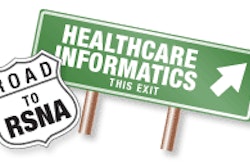A financial study evaluating how the use of health information exchanges (HIEs) by emergency physicians affects patient management has confirmed that millions of dollars could be saved if physicians can get immediate access to patients' medical records, according to a November 4 article in the Journal of the American Medical Informatics Association.
The study, conducted by the Vanderbilt Center for Better Health, analyzed encounters in emergency departments at hospitals in the greater Memphis, TN, metropolitan area over a 13-month period from August 2007 to September 2008. During this time, emergency physicians used the regional HIE to access patient data for 6.8% of the patients treated.
The cost of treatment for these 15,798 patient encounters was compared with the cost for a matched set of 15,798 encounters of patients whose records were not accessed through the HIE. Matching criteria included age, gender, race, presenting diagnosis, site of emergency care, and primary payor source.
Lead author Dr. Mark Frisse, director of regional informatics programs and a professor in the department of biomedical informatics at Vanderbilt University School of Medicine, and colleagues determined that for this group of patients whose electronic records were remotely accessed in conjunction with emergency department treatment, there would be an annual cost savings of $1.9 million.
Interestingly, there was no statistically significant negative impact on the number of diagnostic imaging procedures ordered.
The details
There are 16 major healthcare provider organizations in the greater Memphis metropolitan area, and an HIE managed by the MidSouth eHealth Alliance linking them has been in operation since 2005. The region's 12 major hospitals provide a range of clinical and administrative documents, including radiology and pathology reports, laboratory data, and hospital discharge summary notes. As of October 2010, 7.5 million encounter records on 1.7 million patients were electronically accessible. Five million radiology reports and 45 million laboratory tests could also be accessed.
During the study period, all but one of the hospitals' emergency departments had access to a Web portal displaying a running list of all emergency patients admitted over the past 24 hours. (The 12th hospital acquired this capability in July 2008, and it was classified as "mixed access" for the study, with data analyzed separately.)
This regional emergency room portal eliminated the need to print paper encounter summaries during triage. It also enabled emergency physicians and clinical support staff to have Web-based electronic access to the clinical information of all but the 1% to 3% of patients who had opted out of inclusion in the HIE.
For both the HIE and non-HIE patient encounter cohorts, the researchers examined rates of outcome variables that included the number of laboratory tests, electrocardiograms, head and body CT scans, and ankle and chest radiographs. Variables measured also included hospital admissions from the emergency department. Median regional costs during the study period provided by the Tennessee Hospital Association were used to calculate costs.
The researchers calculated societal financial effects by summing the cost differences associated with each outcome variable in which statistically significant differences were observed. Annual cost savings from the 12-month results were calculated by multiplying the estimated total savings by 12/13.
What did HIE access for 15,789 patient encounters accomplish? Regression models determined that there was a decrease in hospital admissions by 412, representing 97.6% of the total savings. There also were 258 fewer laboratory tests ordered.
HIE access eliminated 29 unnecessary head CT and 196 body CT scans, saving an estimated $100,000 and sparing patients unnecessary exposure to high doses of radiation. Eight hundred more chest x-rays were performed, which the authors attributed to inner city emergency departments managing nonurgent chronic medical conditions.
In total, the annual societal savings was approximately $1.95 million. After annual operating costs of approximately $880,000 for the HIE were deducted, the net annual savings was estimated to be approximately $1.07 million.
And this was for less than 10% of the patients admitted to the emergency departments in one metropolitan region in the U.S. over a 12-month period in 2007 and 2008, the authors noted.



















